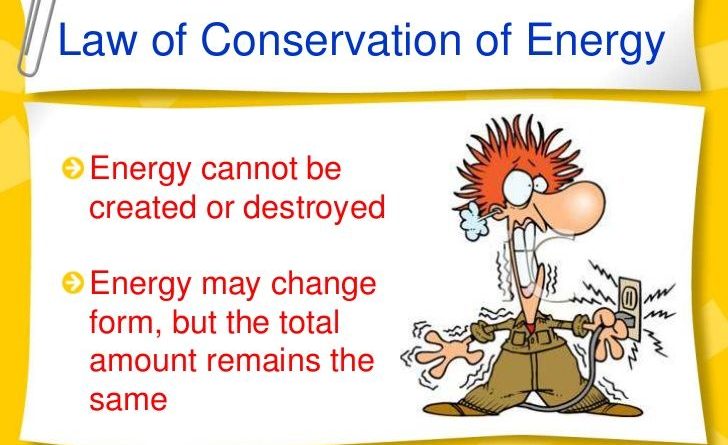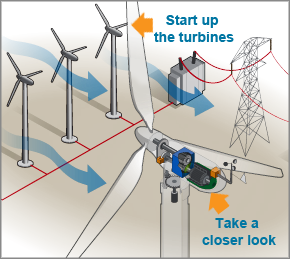The Law of Conservation of Energy is a fundamental principle that stipulates energy cannot be created or destroyed, only transformed from one form to another. This concept is not merely a theoretical construct; it pervades various aspects of our everyday experiences, illuminating the intricate systems at play in the physical world. As we delve deeper into the ramifications of this law, we unveil its profound implications in the realm of physics and beyond.
Understanding the essence of this law prompts us to consider not just the nature of energy itself, but also how it interacts with matter and how these interactions can sculpt our reality. What truly captivates the imagination is the notion that all energy transitions, whether they be subtle or dramatic, perpetuate the continuity of existence. The aesthetic appeal of such a concept resonates throughout various scientific disciplines, painting a vivid picture of the interconnectedness of all things.
At its core, the Law of Conservation of Energy can be illustrated through various real-world phenomena, from the kinetic energy of a moving vehicle to the thermal energy radiating from a warm body. Grasping this law fosters a greater appreciation for the delicate balance that sustains life and the universe itself.
Let us embark on an exploration of its significance and implications in different contexts.
The Foundations of Energy Transformation
Energy exists in numerous forms: kinetic, potential, thermal, chemical, and electrical, among others. Each type serves unique purposes and plays a pivotal role in shaping physical laws. Kinetic energy, for instance, is the energy of movement. It is manifested in wind currents and flowing water, while potential energy exists in a static state, ready to unleash its latent power. Take a boulder perched atop a cliff; its potential energy can transform into kinetic energy as it plummets to the ground, illustrating a seamless conversion in accordance with the Law of Conservation of Energy.
This delicate balancing act is not confined to large, observable phenomena. At the microscopic level, energy transformations propel chemical reactions that sustain biological organisms. In photosynthesis, plants adeptly convert sunlight into chemical energy, which subsequently nourishes them and, ultimately, the entire food web. This intricate dance of energy highlights the interconnectedness of life and the vital ecosystems that thrive on energy transformations.
Applications in Physics: A Glimpse into the Universe
The Law of Conservation of Energy underlies key principles in various branches of physics, including classical mechanics, thermodynamics, and electromagnetism. In classical mechanics, this law aids in predicting the motion of objects when subjected to forces. Whether analyzing the arc of a projectile or the oscillation of a pendulum, understanding energy conservation facilitates accurate computations and enhances our grasp of motion dynamics.
In thermodynamics, the implications extend to understanding heat transfer and the behavior of gases. The first law of thermodynamics, also known as the law of energy conservation, asserts that energy cannot disappear; it merely changes form. This principle is pivotal when examining closed systems, such as engines, where thermal energy converts into mechanical work, enabling transportation and power generation.
Moreover, in the realm of electromagnetism, energy conservation plays a crucial role in the functioning of electric circuits. The flow of current and the conversion of electrical energy into other forms, such as light or heat, underscore the law’s omnipresence. These applications serve as tangible reminders of energy’s ever-evolving nature and its quintessential role in technological advancements.
Environmental Implications of Energy Conservation
This fundamental law extends beyond theoretical physics into the realm of environmental consciousness. The principles of energy conservation are synonymous with sustainability, prompting a collective responsibility towards our planet. When energy is transformed efficiently, the environmental impact diminishes, leading to a reduced ecological footprint.
Renewable energy technologies, such as solar panels and wind turbines, epitomize the harmonious application of the Law of Conservation of Energy. These innovations harness natural processes to convert sunlight and wind into usable energy, with minimal waste. By embracing sustainable practices rooted in energy conservation, we embark on a journey towards a greener future, redefining our relationship with the Earth and its resources.
Furthermore, understanding energy conservation empowers communities to adopt energy-efficient behaviors, reducing reliance on fossil fuels. This shift not only mitigates climate change but also fosters a deeper appreciation for the finite nature of resources, urging society to innovate and adapt responsibly. Thus, the recognition of energy as a transformative entity highlights the potential for human ingenuity to combat pressing environmental challenges.
Conclusion: The Continuity of Energy in a Changing World
The Law of Conservation of Energy remains an enduring framework through which we can comprehend the universe’s complexities. From the kinetic beauty of a rolling sphere to the profound mechanisms sustaining life, energy transformations are at the very heart of existence. Recognizing the significance of this law not only enhances our scientific understanding but also inspires a renewed dedication to fostering sustainable practices. The interplay of energy reflects a universe in perpetual motion, reminding us that while the forms of energy may change, its essence—along with our collective responsibility towards it—endures.







